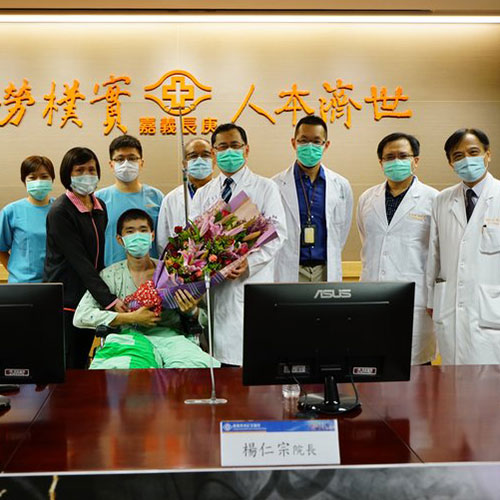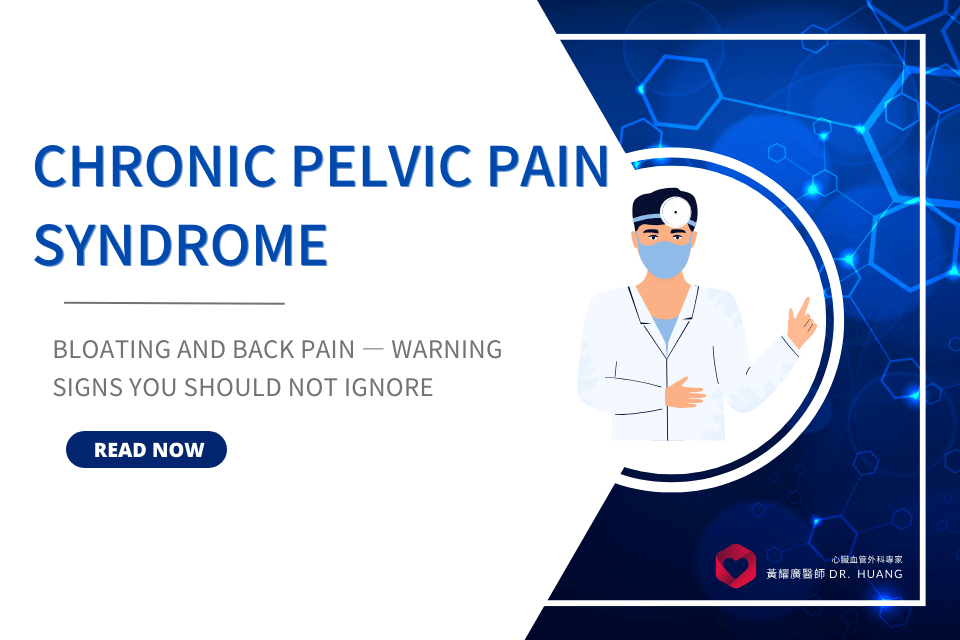Leading Expert in
Dialysis Access Surgery
Essential for Dialysis: Access Care
A healthy vascular access is essential for hemodialysis.
The three primary types of vascular access are arteriovenous fistula (AV fistula), synthetic graft, and temporary catheter.
These accesses allow for rapid blood flow out of the body for purification and then quickly back into the patient.
Dr. Huang and his team offer comprehensive hemodialysis access services, including fistula creation, maturation, maintenance, and complication management.
Our goal is to provide patients with the best possible dialysis outcomes through expert vascular care.

Dr. Huang's Extensive Experience
- Chief of Cardiac Surgery at Chang Gung Memorial Hospital, Chiayi
- Subspecialty Director of Thoracic Surgery, Taiwan Society of Thoracic and Cardiovascular Surgery
- Subspecialty Director of Vascular Surgery, Taiwan Society of Vascular Surgery
Expert Care for
Dialysis Access
SERVICE

AV-fistulaNative Blood Vessels
Lower occlusion rate, Longer lifespan.

Synthetic GraftA-V graft
With proper care, an A-V graft can be used for more than a decade.

Hemodialysis CatheterPermcath
Provide immediate use but predispose infection and limits bathing.

Hemodialysis Fistula CarePermcath
Regular maintenance is crucial for achieving the best dialysis outcomes.
Discomforts of AV Fistula
Dr. Huang is skilled in managing all complications of hemodialysis access and provides tailored fistula reconstruction solutions to help patients regain a sense of balance in their lives.
-
Having kidney failure but not knowing who to consult for dialysis access creation.
-
The dialysis access is blocked and requires immediate intervention.
-
The bleeding from the fistula has become increasingly difficult to control.
-
The blood flow rate in the dialysis fistula is too slow.
-
The hand with the dialysis access is cold and painful.
-
Dialysis arm is swollen, discolored, and extremely painful.
-
Due to the infection in the artificial blood vessel, complications have arisen.
-
The dialysis tube in my neck feels like it's about to fall out.
Having kidney failure but not knowing who to consult for dialysis access creation.
Patients with kidney failure often require a temporary vascular access for hemodialysis.
If you're unsure about who to consult for AV fistula, you can contact Dr. Huang via LINE for personalized advice.
The dialysis access is blocked and
requires immediate intervention.
Before the dialysis access gets completely blocked, there are usually some signs that it might be narrowing. That's why regular check-ups are so important.
If a blockage does happen, cardiovascular surgeon will use a balloon to widen the narrowed area and remove any blood clots to restore blood flow and facilitate dialysis.
The bleeding from the fistula has become increasingly difficult to control.
Post-dialysis bleeding has been prolonged due to venous stenosis of the fistula.
If left untreated, the fistula may eventually occlude, preventing dialysis and posing a serious threat to life.
The blood flow rate
in the dialysis fistula is too slow.
Your dialysis machine needs a good blood flow rate of at least 200 ml/min to work properly.
Insufficient blood flow can lead to "needle skipping," indicating potential fistula stenosis.
AV fistulas are more likely to have this problem. Once occluded, AV fistulas are more challenging to salvage compared to synthetic grafts, increasing the risk of fistula failure.
The hand with the dialysis access
is cold and painful.
Patients with dialysis fistulas notice that the hand with the fistula is cooler and darker than the other.
This is normal because the fistula takes some of the blood flow away from the hand.
However, if you start to feel pain, doctor may suggest treatments like medications, embolization, angioplasty or fistula closure.
Dialysis arm is swollen, discolored,
and extremely painful.
There are two primary reasons for swelling in the dialysis access arm: severe stenosis and excessive collateral fistula formation.
Other things, like infection or not enough blood flow, can also cause swelling and pain.
It's important to see your doctor to find out what's causing your swelling.
Complications including
infection, bleeding, and aneurysm.
Dialysis access requires careful maintenance. Improper use and care can lead to infection, aneurysm formation or break down.
In severe cases, this can lead to serious problems like sepsis or severe bleeding.
To prevent these complications, please make sure to see Dr. Huang, our vascular surgeon, for regular check-ups.
The dialysis tube in my neck
feels like it's about to fall out.
Neck dialysis catheters are typically used as a temporary replacement for AV fistulas and grafts, usually for two to four weeks.
Patients with impaired consciousness or limited self-care abilities are more reliant on neck dialysis catheters for long-term dialysis, making them particularly susceptible to catheter dislodgement caused by infection or accidental pulling.
Dialysis Access Creation Process
-
 1
1Consultation
Visit Chiayi Chang Gung Memorial Hospital or LINE us for more information.
-
 2
2Pre-Surgery Preparation
Surgery will be scheduled on Monday AM or Wednesday AM/PM.
-
 3
3Operation Day
Please bring surgery documents and pain medication. A family member or friend must accompany you.
-
 4
4Operation Finished
Follow-up appointment and suture removal in one week.
-
 5
5Post-surgery Follow-up
Get quick answers to questions with our LINE-based post-procedure consultation service.

FAQS About AV Fistula
Fistula problems are a serious concern for dialysis patients, and doctors are here to address your common questions about hemodialysis.
What are the types of hemodialysis access?
There are three main types of hemodialysis access: arteriovenous fistula, synthetic graft, and temporary dialysis catheter.
These accesses allow for rapid blood flow out of the body for purification and then back into the patient.
What are the pros and cons of a fistula made from your own blood vessels?
A fistula is created by connecting an artery and a vein in your arm. It's less likely to get blocked and can last a long time.
But it takes several months to heal and work properly, and not everyone has veins that are good enough.
If you've been sick for a long time or are older, your veins might be damaged from other treatments, or you might already be using a temporary tube in your neck for dialysis, so you might not have time to wait for a fistula to mature.
What are the advantages and disadvantages of a synthetic graft?
While synthetic grafts for hemodialysis are often associated with higher rates of occlusion and infection, they offer several advantages. For instance, they are easier to cannulate in obese patients.
With proper care, their lifespan can be extended, with some patients using them for over a decade.
Why do we need to change the dialysis tube in the neck to one in the arm?
The tube in your neck is a quick way to start dialysis, but it can get infected easily because part of it is outside your body.
This can make you sick. Also, you can't take a normal shower with it. So, we usually try to switch to a dialysis access in your arm after a few months.
How can I find a recommended physician for a blocked dialysis catheter?
A good doctor for a blocked dialysis access should have a wide range of skills and experience.
They should be able to choose the right treatment based on your specific situation and work closely with your dialysis team and family to develop the best possible care plan.
What are the common treatments for dialysis graft occlusion?
There are several ways to treat a blocked dialysis graft.
A common procedure involves using a balloon to open up the blocked area and remove the clot.
For patients who have repeated blockages, options like surgery to revise the graft or placing a special stent may be considered.
Do I have to pay for my dialysis graft?
Usually, the cost of getting a dialysis graft is covered by health insurance. However, in some cases, you might need to pay for a special type of support called a stent.
Do I need to stay in the hospital for fistula surgery?
Most fistula surgeries can be done without staying in the hospital.
However, if you have certain conditions, such as difficulty with local anesthesia or a current infection, you may need to stay in the hospital for surgery.
When would they need to take out my artificial blood vessel?
If your artificial blood vessel gets infected, it will need to be removed.
FeatureStory
靜脈曲張哪4種症狀就要就醫?一次瞭解精確診斷和微創治療
不過,當靜脈瓣膜退化鬆弛,阻擋血液回流的機制失靈,靜脈血淤積在表淺靜脈系統,就可能造成靜脈曲張。 黃耀廣醫師提到,臨床常見腳痛、血管破裂出血、...

 聯合報
聯合報
大學生車禍股動脈斷命危 嘉義長庚組跨醫療團隊搶命
上午院長楊仁宗、急診科蕭政廷副院長、心管外科黃耀廣醫師及麻醉科 ... 黃耀廣說,股動脈完全斷裂在創傷病人中不常見,但是發生會造成病人短時間大量...

 自由健康網
自由健康網
出現昏厥時,平均剩3年!治療主動脈瓣狹窄,心臟外科醫師圖解懶人包
黃耀廣醫師說,「部分患者是天生的,因為主動脈瓣膜的構造長得不太一樣,而在關閉時無法密合。」 如果主動脈瓣無法完全關閉,血液便會在心臟舒張的時候,...

驚!車禍骨折氣胸、左肺塌陷回台手術治療
經過家人朋友多天奔走,並由台灣醫師全程護送下,曾姓患者在急診時除了重新檢傷細查後,由嘉義長庚心胸血管外科黃耀廣醫師進行住院診治,並協助適當止痛,...

 自由健康網
自由健康網
85歲嬤主動脈瓣逆流 開心成功保命
嘉義長庚醫院心臟外科醫師黃耀廣說,一般的主動脈瓣逆流只須更換瓣膜,就可改善病患狀況,但依患者狀況,若直接更換瓣膜會造成主動脈爆裂而在手術過程...

 ETtoday健康雲
ETtoday健康雲
嘉義長庚微創手術品質優 有效治癒氣胸肺塌
不過,當靜脈瓣膜退化鬆弛,阻擋血液回流的機制失靈,靜脈血淤積在表淺靜脈系統,就可能造成靜脈曲張。 黃耀廣醫師提到,臨床常見腳痛、血管破裂出血、...

Difference Between an Operating Room and a Catheterization Lab
An operating room is for more complex procedures like creating a new fistula or graft, or fixing infections. It usually involves general anesthesia and a longer recovery time.
A catheterization lab is for less complex procedures like fixing a narrow or blocked fistula. It usually involves local anesthesia and a shorter recovery time.
One-stop Hemodialysis GraftCreation and Maintenance Service
Professional Strengths
Reliable Surgical Quality
Our stable team of surgical experts provides comprehensive solutions for hemodialysis access issues.

Comprehensive Services
This encompasses graft placement, fistula creation, fistula maintenance, and complication management.
Led by Vascular Surgeons
Delivering world-class vascular access services.
Addressing All Dialysis Access Complications
All your dialysis access needs can be addressed under one roof.
Solving Complex Hemodialysis Issues
With advanced equipment, flexible scheduling, and most experienced physicians, we provide tailored solutions for dialysis access problems.
LINE Consultations
Experience convenient online consultations, treatment scheduling, and post-operative follow-up through our LINE
MedicalUpdate
How can I protect and maintain my AV fistula?
To ensure your AV fistula remains healthy and functional, it's important to perform daily self-checks, limit tourniquet use, and schedule regular appointments with a vascular specialist.





